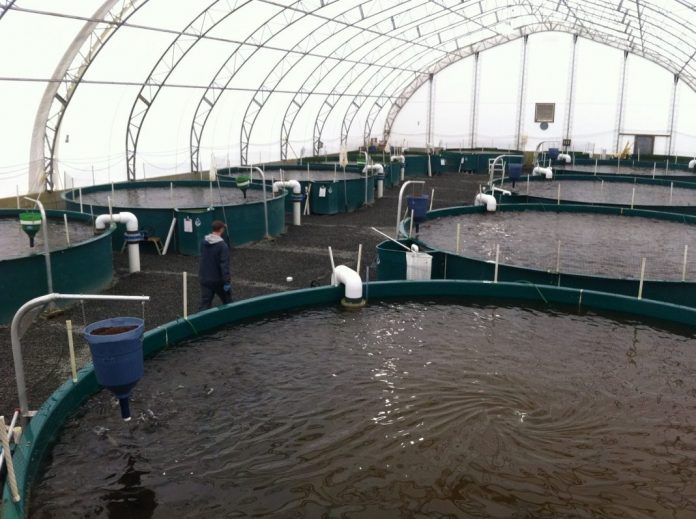It was a categoric no from DNB in 2015 but now the tide is changing on indoor salmon farms.
Nonetheless, according to Anne Hvistendahl, head of foods and seafood at DNB, land-based fish farming should take place in countries other than Norway.
“We have financed one production plant that is far away from Norway, which means a saving on transport costs. Locating a plant as far away as the United States or Asia gives you a buffer on the cost side, providing you succeed in what you are doing,” Hvistendahl told SalmonBusiness.
Can be combined with large smolt
In 2015 SalmonBusiness quoted Hvistendahl with regard to her statement that they (DNB) had so far said no thank you to land-based salmon farming, after having received many enquiries about financing.
“Our viewpoint is slightly nuanced now. It’s extremely challenging to finance new technology with debt and bank loans without the proof that it works before one cycle has been completed, and that cash flow is established. But there are exceptions,” she said.
“Large smolt are fine, and we’ve noted that fish farms, which can be combined with existing operations in the industry, can be a smart solution,” said Hvistendahl.
DNB granted a 60 million dollar loan to Atlantic Sapphire, who are building a 220,000 tonne land-based salmon famr in Miami.
“In the first phase it’s vital to have shareholder equity. Bank loans are difficult to obtain, because banks don’t want to take on such a high risk. We have seen that some companies have managed to complete a cycle, that the technology works, and we have sampled the salmon,” added Hvistendahl.
“DNB Markets carried out a survey in February 2017 where we summarised all the projects that were on the drawing board. That amounted to 220-225,000 tonnes of land-based production. It’s our understanding that two of these have received debt financing.
Can’t see land-based production taking off in Norway
Last Thursday SalmonBusiness editor, Aslak Berge, published an editorial that raised the possibility that financing could halt land-based salmon production, in the same way experienced by farmed cod ten years ago. This appeared in the wake of an IntraFish overview that showed around ten percent of Norwegian fish farming could be taking place on shore, providing all of the advertised projects succeed.
Do you think much of Norwegian salmon production will take place on land in the future?
“No,” replied Hvistendahl firmly, but added:
“There are exceptions though, where for example concepts have been tested that can be constructed on foreign shores, or where they can be combined with an existing Norwegian production site. In this case it would be more profitable to execute this elsewhere”.
Many smart inventors in Norway
However, she is well aware it is in Norway where the biggest advances are being made in technological development.
“The core of technological development is taking place in Norway. Therefore, it could turn out that tests and research are carried out in Norway, even though the physical result is constructed elsewhere,” she said.
“I think technology is undergoing constant transformation. Large smolt production has shot ahead in Norway. It’s “just a matter” of extending this development a notch further. Regardless, in Norway the industry is in a period of dynamic technological development. It’s a country brimming with inventors the likes of Gyro Gearloose*,” she concluded.
* Gyro Gearloose, the Disney anthropomorphic inventor duck character, is a term used here to describe smart people.


